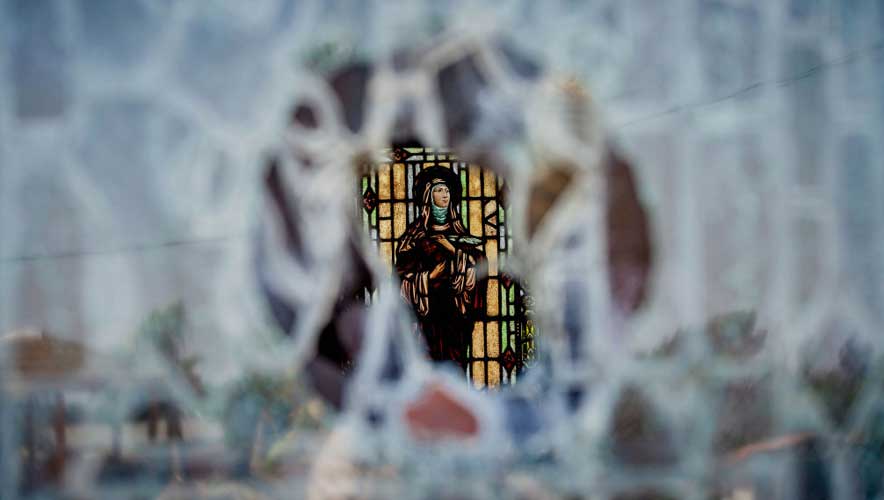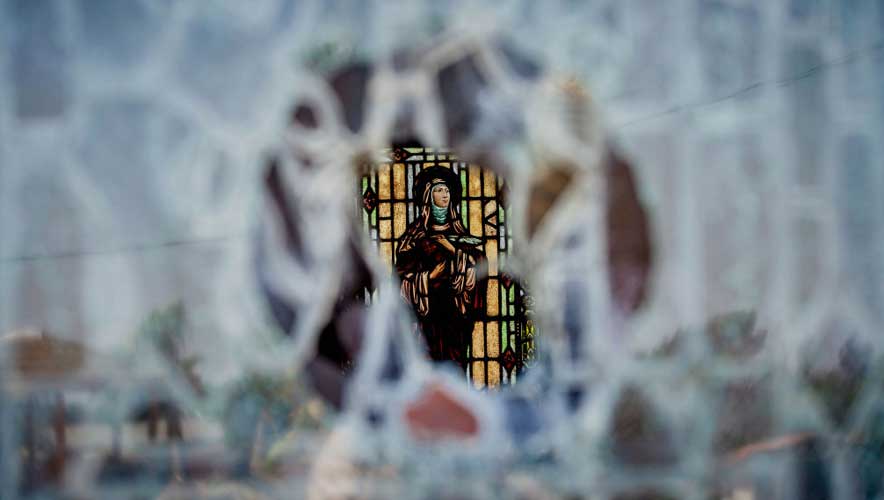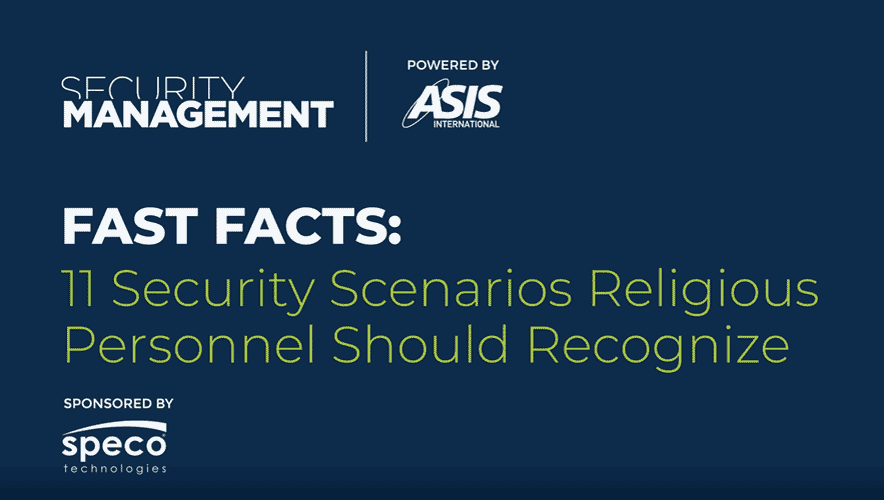Extremism Against Places of Worship Extends Across Faiths
Hostage situations. Graffiti and vandalism. Gravestones toppled. Active shooters. Bombings. Extremists are becoming more brazen in their tactics and more expressive in their ideologies, committing acts of violence throughout the world at houses of worship, burial sites, and other historically significant places.
The actions are counter to peace, tolerance, kindness, and empathy; instead replacing them with images of war and hatred—the end results of political and religious bigotry.
SponsoredSpeco Technologies has the solutions to protect YOUR House of WorshipClick the link to enlighten yourself on how you can keep your House of Worship better defended with Speco Technologies |
Extremism is defined as “the quality or state of being extreme” or “the advocacy of extreme measures or views” often associated with political or religious ideology. It can be a belief, attitude, feeling, or action that is removed from the ordinary. This often manifests as violence between families, races, cultures, tribes, religions, political parties, and countries.
The classification of the action will be viewed as just and moral by some; while others will view it as unjust and immoral, depending on the observer’s values, politics, morals, and societal norms. Defining ordinary or baseline acceptable behavior is the key, and society’s level of acceptance continually changes with the increasing coordination of efforts and strengthening of voice, many occurring through social media platforms.
“Hot-button political issues” are a leading reason for violence at places of worship. Not every one of these incidents is committed by a member of an organized extremist group—whether right-, left-, or alt-leaning—but all are concerning and deserve in-depth review to determine how they might affect future house of worship security. Are the attacks planned and organized or a random mob reacting to a recent event, choosing to act in anger instead of creating a dialogue toward reconciliation and peace? Have criminal gangs evolved into political extremists? Are these events perpetrated by lone actors or groups?
Recently, there has been an increase in attacks on U.S. faith-based organizations, pregnancy resource centers, reproductive health clinics, judicial buildings, and places of burial. Malicious actors are committing acts of violence and destruction that often are related to their beliefs on abortion, alternative lifestyles, indigenous schools, Black lives, police conduct, environmental issues, Jewish heritage, and human dignity, and no religious faith or denomination is immune from the risk.
Documenting the Violence
Houses of worship across many religions faced a spike in security incidents in recent years, whether driven by the response to a controversial event or a longstanding tension or discrimination.
As of February 2023, there have been 289 attacks against Catholic churches in the United States since May 2020, according to a report produced by Catholic Vote. The attacks include arson, broken windows, decapitated statutes, and satanic graffiti. Between May 2022 and February 2023, 130 incidents were logged—demonstrating an increase in incidents after the leak of the draft U.S. Supreme Court decision in Dobbs v. Jackson’s Health Organization, which overturned federal abortion protections granted under Roe v. Wade.
The report stated that the majority of recorded incidents involved the destruction of property, not theft, indicating that the primary motive was not material gain.
Similarly, a report from the Family Research Council released in December 2022 indicated that church attacks spiked following the overturning of Roe v. Wade. The council’s report, Hostility Against Churches Is on the Rise in the United States, reported 420 acts of hostility against 397 churches between January 2018 and September 2022.
The Anti-Defamation League (ADL) issued a report in April 2022 stating that anti-Semitic incidents reached an all-time high in the United States in 2021 with a total of 2,717 incidents of assault, harassment, and vandalism. This is the highest number of incidents on record since the ADL began tracking incidents in 1979 and a 34 percent increase over 2020.
The report found that anti-Semitic incidents increased in every category including Jewish community centers, synagogues, schools, and college campuses. Attacks against synagogues in particular increased 61 percent over year-over-year.
Attacks on the Islamic community continue to increase in the United States with arson and vandalism at mosques, cemeteries, and schools. Buildings have been damaged by bullets, bombs, graffiti, eggs, and animal remains. According to data from the American Civil Liberties Union (ACLU), 12 U.S. states had records of 11 or more anti-mosque incidents since 2005. California alone had 35 incidents noted.
The Hindu American Foundation recently published a guide for temple leaders who are faced with hate crimes and violence, encouraging leaders to engage the community, law enforcement, and public officials.
What Can Security Professionals Do to Help?
It is apparent that understanding and preventing actions on ideologies will take a different approach than the mechanics of good security procedures.
“Changing the way a person thinks and how they respond to anger is a tremendous challenge, and thankfully we have law enforcement agencies who monitor hate speech and other forms of chatter that could lead to violence,” says Douglas Beaver, CPP, director of protection services for the National Museum of Women in the Arts, located in Washington, DC.
Hate speech should be reported to local law enforcement agencies, and hate speech posted on social media should also be reported to the platform. This follows the classic guidance of “See Something, Say Something.” U.S. federal agencies are actively involved with monitoring hate group speech/chatter online, and this work recently enabled them to prevent an attack on a synagogue in New York.
“Securing places of peace is a priority for each of us, and building relations and partnerships will be a key,” says Don Shellenberger, CPP, member of the ASIS Cultural Properties Steering Committee and chair of the Houses of Worship subcommunity. He has been working to connect the Houses of Worship subcommunity to various religions to help establish and enhance relationships between faiths.
This emphasis is borne out in the Hindu American Foundation’s Guide to Temple Safety and Security, which advocates four key steps to mitigate hate crime and active shooter incident risks:
- Evaluate vulnerabilities of temple premises.
- Develop a proactive relationship with law enforcement, including inviting representatives to temple events.
- Create a contingency plan for incidents, preferably in conjunction with law enforcement, and train temple staff and volunteers on the plan.
- Work with other religious bodies for security, including other temples, mosques, churches, and synagogues. Learn from each other’s security protocols and risk management approaches.
“We have heard more frequently that building trust, developing ‘deepening’ relationships and outreach efforts to combat extremism against houses of worship takes time,” Shellenberger says. “Immersion experiences to gain an understanding of another’s belief system should be a starting point for prevention and mitigation initiatives. Sustaining public/private partnerships, maintaining community and neighborhood engagement activities, and providing multiple reporting modalities for anonymously reporting hate speech concerns and fears within faith-based groups can help combat extremism.”
Extremist actions are often explained as a result of substance abuse or mental illness, while refusing to acknowledge that the roots of the issue—which often begin in families, religious institutions, and schools—have been reinforced with messages of discrimination and hate embedded in entertainment, history, social media, and media outlets.
Security professionals and threat managers must make good faith efforts to build relationships by reaching out to all segments of society and all religions, the private sector, law enforcement, and academia in hopes that we can counter messages of hatred and defray any thoughts of acting on violence.
Consider participating in interfaith activities or forming an interfaith coalition to address community issues. Efforts should be made to share experiences and working together toward community goals. Increased interaction and education will only decrease incidents of hate as we break down barriers and build relations of acceptance.
Paula L. Ratliff, BSC, MS, is a criminologist and freelance writer from Kentucky, USA. She is the author of Crime Prevention for Houses of Worship, A Security Survey for Houses of Worship, and various other publications. She is a member of the ASIS Cultural Properties Community and the Houses of Worship subcommittee.













